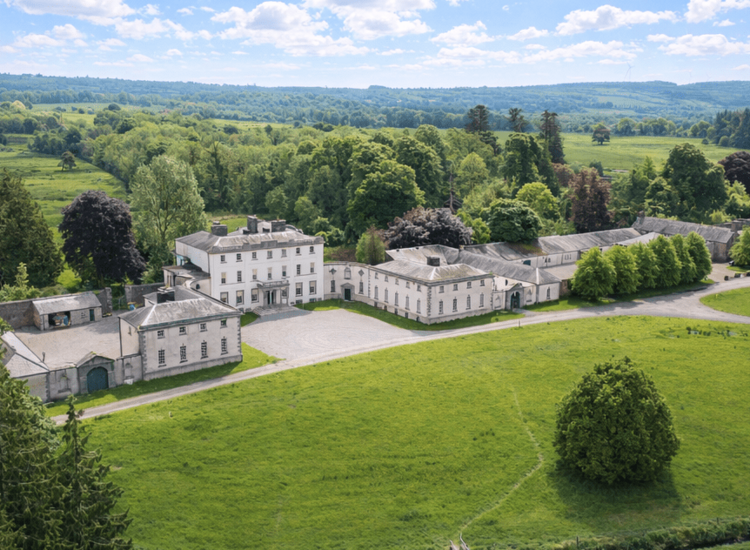Visitors from the United States who arrive at the EPIC ticket desk this July 4 can avail of a special two for one entry promotion valid only for this year’s independence holiday.
By Ray O’Hanlon
Dublin is, in considerable part, defined by water.
They say you are not a genuine one hundred percent Dubliner unless you are born between the two canals, the Royal and the Grand.
If you live on the north side of the River Liffey you are a Northsider, and if you reside south of it you are a Southsider.
Dublin is also defined by its bridges.
In my youth, virtually all activity in the city was confined between streets on both banks of the Liffey between Capel Street Bridge in the west, and Butt Bridge in the east.
Beyond the span named after the 19th century Home Rule advocate, Isaac Butt, there were the docklands, a mysterious place only visited if you were boarding a ferry for Liverpool.
The ferry still comes and goes, as do cruise ships and container vessels, but much of the docklands have given way to Dublin’s expanding role as a center of global finance.
But if glass towers are symbols of the city’s future, there are yet reminders of its storied past as port for the second city of the British Empire.
One of those reminders is a bonded warehouse dating to 1820 where supplies of wine and tobacco awaited the pleasure of the populace.
Today, you don’t see that building, known as CHQ, from the street outside. But it’s there, solid and purposeful beneath a modern shell that wraps itself around a retail mall with all the expected culinary trimmings.
CHQ, formerly known as Stack A, or the Tobacco Store, boasted the largest pre-20th century clear floor space in Dublin City. It was restored by the Dublin Docklands Development Authority.
You know you have reached CHQ when your eyes fix on six tall, bronze figures of emaciated men and women, and one dog.
This work of unsettling art is entitled, “Famine” and is the work of Rowan Gillespie.
The bronze figures are here to board the ship “Perseverance.”
In 1846 it was one of the first of the many ships to leave Dublin with refugees seeking safety away from their ravaged homeland.
Leaving the figures behind, just as the figures prepare to leave Ireland behind, it is a few steps across the street to CHQ, home to “EPIC The Irish Emigration Museum,” a must see destination in what today is called Dublin’s Custom House Quarter.
A recent visit was a revelation.
Having confined youthful activity to the streets between the two aforementioned bridges it was easy to forget that the Liffey widens significantly as it reaches closer to Dublin Bay.
At Custom House Quay it is more Thames in span than the river just a short distance back over the shoulder.
And the new building developments and tree plantings on the quays hereabouts deliver a hint of somewhere else. Paris perhaps.
This is old Dublin made new.
And, within the shell and cellars of CHQ, old Dublin, and old Ireland, are being newly revealed.
Though it is charged with telling the sad but ultimately inspiring story of Irish emigration, EPIC is not a national or city-owned museum, but is rather a private one founded by Neville Isdell, a County Down-born businessman who initially made his name marketing that all American brand, Coca Cola, in southern Africa.
Isdell, who would ultimately serve as Chairman of the Board (2004-2009) and Chief Executive Officer (2004-2008) of Coca-Cola, together with former Irish President Mary Robinson, officially unveiled EPIC to the world in May, 2016.
So the museum is new, even if its walls reach back to the days of square rigged sailing ships outside the front door.
There’s actually a ship of that era just outside that door and a little down the quay, but more on that anon.
EPIC is a start to finish meander through a series of galleries, twenty in total, set in the restored warehouse.
Each gallery has its own theme and these cover the story of a people as they departed Ireland for all corners of the world and the story as it evolved once they reached their far flung destinations.
A minimum time in the galleries is suggested to the visitor. I added time to that suggestion and it was not a difficult thing to do.
The museum pulls you in, as much because of the intimacy of each brick-walled gallery as the visual, audio, and live presentations by actors in each one of them.
As you progress you get to meet, by way of digital technology as well as actors, an array of Irish men and women who have accomplished extraordinary things around the world and through the years.
One encouraging moment on the journey through the vault-like galleries was the sight of a group of teenagers, phones nowhere in sight, fully engaged with one of the interactive displays.
Along the way, in each gallery, you stamp a “passport” given to you at the outset.
There could be a certain intimation of guilt aimed at those who do not stamp the document, but there is a sense of mission accomplished when you emerge back into the world with all the required stamps.
Besides, it’s the mannerly thing for a visitor to do.
EPIC, in its explanation of itself, states that it tells the story of the 70 million worldwide who claim Irish descent. The museum is both a commemoration and celebration of the story of Irish emigration.
As it should be.
The location of the museum is appropriate in that the quays outside were themselves the point of embarkation for so many leaving Ireland, mostly for England initially, and mostly in the 19th century.
But not all went to England of course. America and Canada also beckoned, which brings us back to that ship berthed just down the quay.
The Jeanie Johnston is well remembered both in the story of 19th century Irish immigration to America and in more recent years as a result of a triumphant return to New York Harbor in 2003.
The original Jeanie Johnston was built in Quebec and the one now berthed on the Liffey is an exact replica built in Tralee, County Kerry.
Visitors to the tall ship need not worry about a perilous Atlantic voyage lasting many weeks. The tour is fifty minutes.
But back to the museum. When you emerge from your journey through time and space you cross the main atrium into the museum gift shop. Also here is the Irish Family History Centre where the visitor can find answers to all those questions of who, what and where in the family.
I found an answer to a family mystery in a matter of minutes thanks to a genealogist who pulled up two Irish census reports from the early twentieth century.
It was a most satisfying end to a most intriguing visit.
At the outset of this tale, mention was made of Dublin’s Liffey bridges. There are a few more of them these days.
These new structures invite the imagination to consider Dublin in a literally broader sense. So the area of the city that requires exploring is today much greater than the Dublin of my youth.
The bridges are bookends of sorts.
And so are the city’s most inviting visitor attractions. The bookends to the west might be Kilmainham Gaol, or the Guinness Storehouse.
The easternmost bookend would be EPIC, a destination that is literally that in terms of the story it brings to our world, the Irish part, and all that goes with it.
NB: EPIC is running a special 2-for-1 promotion for all our American visitors this 4th of July.
All that is required is a form of U.S. identification at the ticket desk to avail of the offer which is valid for the 2017 holiday only. No advance booking is required.








